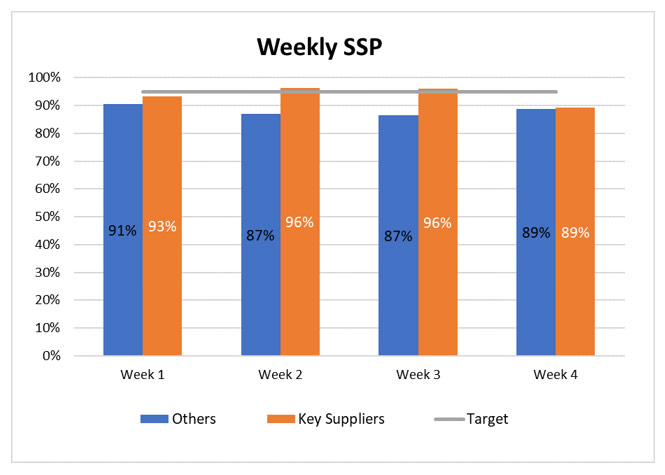Many different factors trigger variations in demand. Poor forecasting, change in demand of substitute products, expectation of customers (shift in customers’ preference), price at global level, increase in number of customers, change in government regulations, technology improvements are some among them. OEM's strive hard to react to unprecedented growth in demand and try to reduce the gap in demand and supply. Demand variability could be radical, it is interesting to see how the supply chains reacts when there is an upsurge. This will help the entire supply chain (OEM’s, suppliers) to reduce cost and increase revenues, hold the market share and customer satisfaction. Among the many factors affected in these situations is inbound supply chain performance i.e., how suppliers react to OEM's abrupt increase in demand. Supply base will be stretched in terms of existing production capacity. Suppliers (both internal and external) will face issues in meeting the OEM's production schedules. Measures to mitigate the risk can be:

Figure 1. Approach to mitigate the risk
A few factors affected in reacting to these situations are Performance, Delivery and Quality.
Managing supplier performance is one of critical factors that affect OEM operations. OEM’s need to work with the supplier and understand the voice of the supplier. Supplier performance can be improved by:
OEM's aim for on time delivery from suppliers, past dues will cause challenges in supply, inventory, logistics and transportation. Issues get worse when there is a spike in OEM demand. As discussed earlier, schedule visibility and demand variability will help OEM and suppliers to have a clear line of sight. OEMs need to team up with Suppliers to avoid line down situations. Quick wins will be to collaborate with key internal and external process partners, drive delivery commitments and ensure on time shipments.
Key factors that will help reduce the issues in delivery are:

Figure 2. View of Supplier Shipping schedules not on time

Figure 3. Four-week Snapshot of Supplier Shipping Performance (SSP)
To remain competitive and reach out to Customer satisfaction OEMs expect the suppliers to delivery right product at right time at right place and right quality. Quality has become integral part of supply chain as defective parts lead to non-conformance and increase past dues. Measures that can lead to good quality of parts from supplier could be:
CGN can handle “increase in demand” situations with a control tower approach. We formulate a communication hub and collect key metrics into a single source to ensure focus in prioritizing efforts/decisions. Once completed, we develop a dashboard based approach to track KPI’s, support decision making, and provide end-to-end visibility on the value chain.

Figure 4. Control Tower approach
© 2020 CGN. All rights reserved.